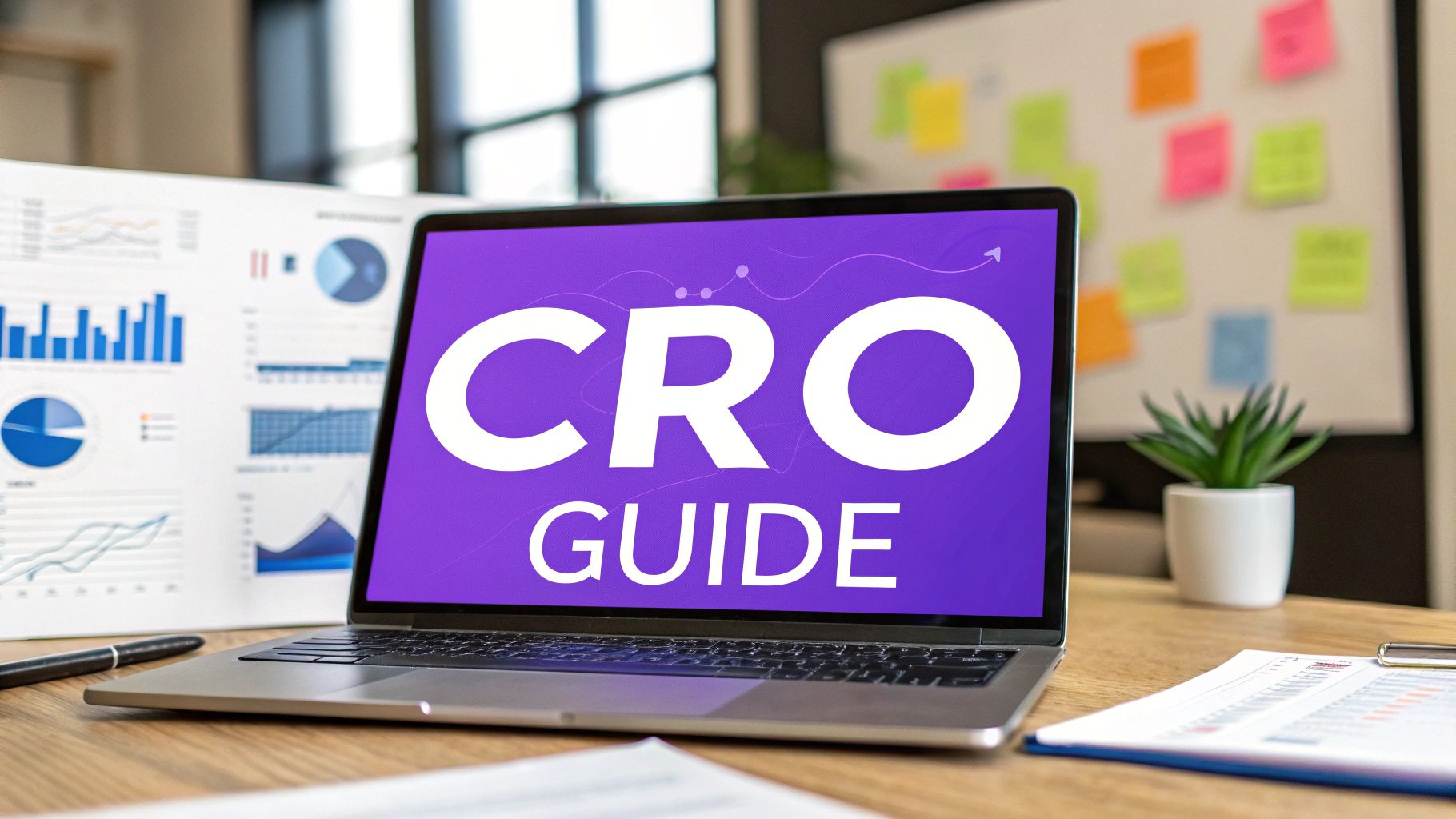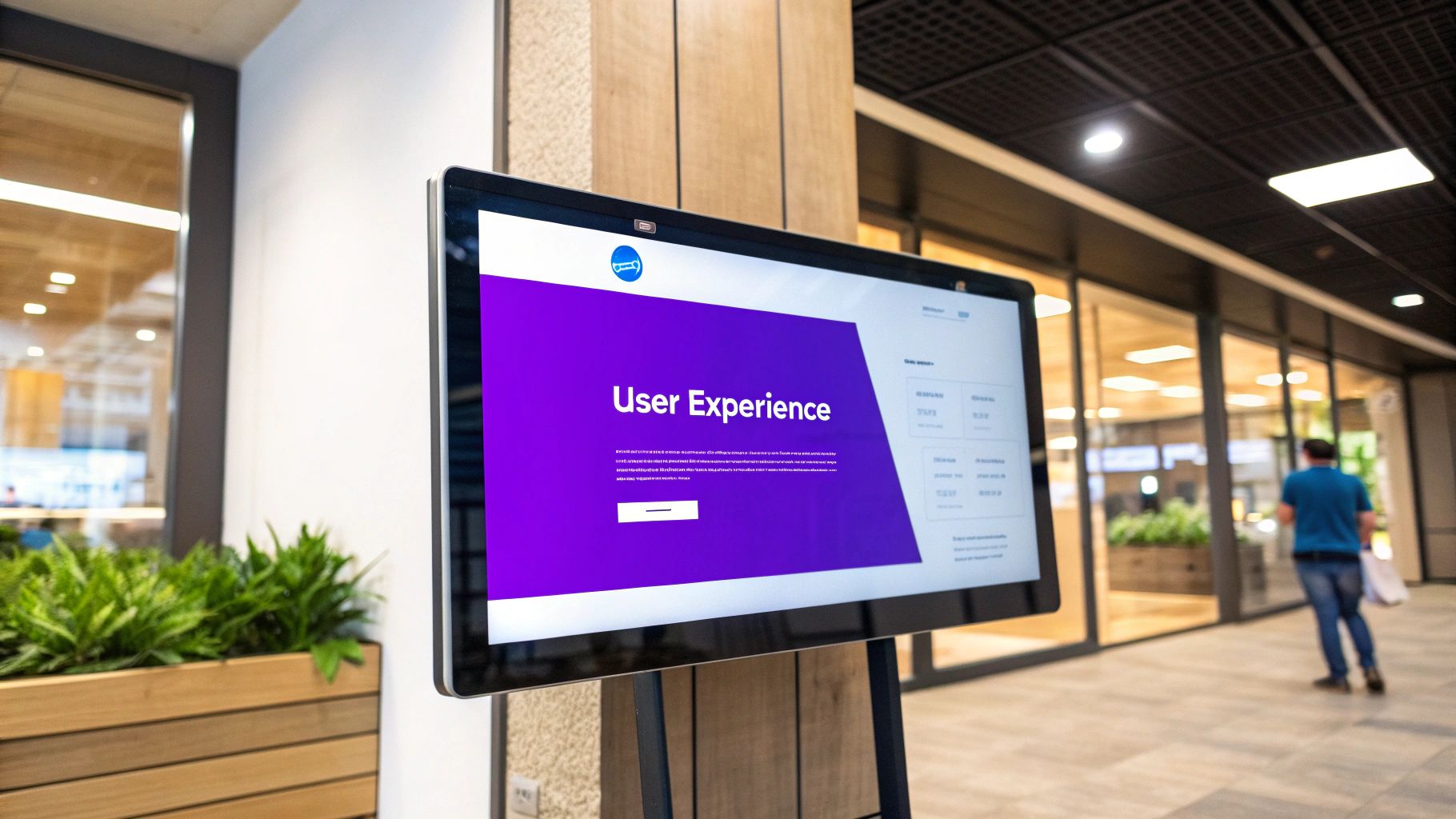The Ultimate Conversion Rate Optimization Guide: Transforming Results From 2% to Double Digits

Breaking Through Conversion Rate Plateaus

While most websites settle for conversion rates around 2.35%, top performers consistently achieve 11% or higher. The gap between average and exceptional results often comes down to understanding visitor behavior and taking strategic action. This guide explores proven approaches that help leading companies dramatically improve their conversion rates by focusing on what really drives visitor actions.
Identifying Your Conversion Bottlenecks
Just as a doctor needs to diagnose before treating, improving conversions starts with understanding exactly where visitors drop off. Take a close look at your analytics - are people leaving immediately after landing on your site? Do they add items to cart but abandon during checkout? For instance, if 80% of visitors exit during payment, that's a clear signal to optimize your checkout process. Pinpointing these specific issues helps focus your efforts where they'll have the biggest impact.
Benchmarking Against Industry Standards
While 2.35% is the overall average conversion rate, performance varies significantly by industry. Direct traffic tends to convert better, reaching 3.3% on average and up to 5.3% in healthcare, since these visitors often have higher purchase intent. Looking at typical rates for your specific industry provides realistic targets and context for improvement. This helps set meaningful goals aligned with what's achievable in your market.
Debunking Common CRO Myths
Many assume a website redesign alone will boost conversions, but pretty designs aren't enough. Real optimization comes from deeply understanding your audience and crafting experiences that solve their problems. Similarly, A/B testing isn't a one-time fix but an ongoing process of experimentation. Small changes often have surprising impact - something as simple as adjusting button text or removing unnecessary form fields can significantly lift conversion rates when based on visitor data and behavior patterns.
Building a Framework for Continuous Improvement
Long-term success requires creating systematic processes to regularly analyze data, test new ideas, and refine based on results. Tools like Google Analytics and Hotjar help identify patterns in user behavior. By focusing on data-driven decisions and continuous testing, you can steadily improve conversions over time. The key is maintaining consistent effort rather than expecting quick fixes. Regular analysis and optimization based on real user data helps break through conversion plateaus and achieve sustainable growth.
Mastering the Psychology of High-Converting Traffic

Understanding how visitors interact with your site is essential for improving conversion rates. While tracking metrics and fixing technical issues are important steps, the real key lies in grasping visitor psychology. Take direct traffic, for example - it converts at an average rate of 3.3%, often outperforming other traffic sources. The reason? It all comes down to visitor intent.
Understanding Visitor Intent
Think about direct traffic - these are people who already know your brand and type your URL directly into their browser. Just like a customer walking into a physical store with purpose, they usually have a specific goal in mind. Maybe they're returning to complete a purchase they started earlier or looking for a product they've researched. This focused intent and familiarity with your brand naturally leads to higher conversion rates.
Qualifying Traffic from Other Sources
Of course, not every visitor arrives with the same level of intent. Someone coming from social media might just be casually browsing, while a search visitor could be actively researching solutions. That's why it's crucial to understand these different mindsets and guide each type of visitor appropriately toward conversion.
Aligning Your Strategy With User Mindset
Consider where visitors are in their journey when they find your site. A social media click often signals early awareness - these people are just getting to know your brand. Instead of pushing for an immediate sale, focus on building interest through valuable content or resources. Offering something useful in exchange for an email address can help nurture these visitors toward eventual conversion.
Personalizing Conversion Paths
Different visitors need different experiences. For instance, if someone arrives from a blog post about a specific product, welcome them with relevant messaging and product recommendations. This kind of personalized approach shows you understand their interests and helps guide them naturally toward conversion.
Practical Techniques for Enhancing User Intent Signals
Simple changes can make a big difference in working with visitor intent. Clear calls to action, intuitive navigation, and detailed product information help visitors move smoothly through your site. You might also adapt content based on behavior - like showing targeted offers related to past browsing. The key is ongoing testing and refinement based on how real visitors interact with your site.
Unlocking Smart Conversion Intelligence

Understanding user psychology is essential for conversion optimization, but integrating smart analytics tools takes your efforts even further. Rather than replacing human insight, these tools enhance our ability to understand and respond to visitor behavior. By combining psychological principles with data-driven tools, we can create personalized experiences that guide visitors toward conversion. Let's explore how to put this into practice.
Smart Tools for Better Conversion Rates
Modern analytics tools offer powerful capabilities to improve conversion rates. For example, behavior analysis tools can identify which visitors are most likely to convert based on how they interact with your site. By tracking actions like scroll depth, time spent on pages, and click patterns, these tools spot high-potential visitors. This allows you to adjust your approach - perhaps showing targeted offers or social proof at the right moment. The tools can also automatically adjust content and calls-to-action based on what resonates with each visitor.
Making Pages Adapt in Real Time
This personalization goes beyond basic product recommendations. Smart tools can adjust entire page experiences based on how visitors behave. For instance, if someone appears price-conscious, the system might emphasize special deals or payment options. Or if a visitor shows interest in premium features, it could highlight exclusive benefits. This ability to predict and address individual needs helps create more relevant experiences that convert better.
Real Results From Smart Optimization
Many companies are already seeing strong results from these tools. Take the impact of visitor scoring on sales outreach. By identifying the most interested prospects, teams can focus their efforts where they'll have the biggest impact. The tools also uncover valuable patterns in visitor behavior that would be impossible to spot manually. This deeper understanding lets companies fine-tune their websites for maximum impact.
Adding Smart Tools to Your Process
While these capabilities are compelling, implementing them effectively requires a thoughtful approach. Start by clearly defining what conversions matter most and which metrics will track success. Then evaluate available tools to find ones that match your goals and budget. Focus on practical applications that will directly improve results rather than getting caught up in flashy features. When combined with solid conversion fundamentals, these tools provide a foundation for sustained growth. Remember - they work best when enhancing human expertise rather than replacing it. By blending both, you can create experiences that truly connect with visitors and drive meaningful results.
Building a Data-Driven Testing Engine
To turn customer insights into real improvements, you need a methodical approach to testing and optimization. Moving beyond guesswork, successful teams rely on data to guide their decision-making and experimentation. Let's explore how to build an effective testing program that delivers measurable results.
Prioritizing Tests for Maximum Impact
Some tests will significantly improve conversions, while others may have minimal effect. The key is focusing your efforts where they'll make the biggest difference. For instance, testing changes on high-traffic pages like your homepage allows you to gather data quickly and see results at scale. Similarly, addressing underperforming pages often reveals major opportunities for improvement. By being strategic about what you test first, you can maximize the impact of your optimization efforts.
Designing Effective A/B Tests
The most reliable A/B tests focus on changing just one element at a time - whether that's a headline, button, or image. Testing multiple changes simultaneously makes it impossible to determine which specific change drove the results. For example, if you test both a new page layout and different copy, you won't know which element actually affected conversion rates. Keep your tests focused and precise to get clear, actionable insights.
Avoiding Common Testing Pitfalls
Watch out for common mistakes that can undermine your test results. One frequent error is ending tests too early - even if initial data looks promising, you need to run tests long enough to reach statistical significance. Another pitfall is testing too many variables at once, which makes it hard to isolate what's working. Also, failing to segment your audience can mask important patterns. A change might boost conversions for one customer group while hurting another.
Interpreting Test Results and Iterating
After completing a test, carefully analyze what the data tells you. Did the change significantly impact conversions, either positively or negatively? Let the results guide your next steps. When a test succeeds, implement the winning change and consider related optimizations to test. But don't view negative results as failures - they provide valuable insights about what doesn't resonate with your audience. Use those learnings to refine your approach and try new solutions. This cycle of testing, learning and improving drives ongoing optimization.
Building a Culture of Continuous Testing
Getting buy-in from stakeholders is essential for sustaining a testing program. Share early wins to demonstrate the value and build momentum. Make testing a regular part of your workflow and empower teams to run experiments. When testing becomes part of your company culture, you create an engine for steady improvement. The organizations that succeed at optimization take a systematic, data-driven approach and commit to continuous learning and refinement over time.
Crafting Frictionless Conversion Experiences

After establishing a solid foundation of data-driven insights and testing, the next crucial step is making the user experience completely smooth and effortless. This means carefully studying how people interact with your site and eliminating anything that gets in their way. Key areas like loading speed, mobile usability, and checkout flow can dramatically affect whether visitors take action. Let's explore proven ways to create experiences that naturally guide users toward conversion.
Optimizing Page Speed for Enhanced Conversions
How quickly your site loads directly impacts whether visitors stick around and convert. Studies have found that just one extra second of loading time leads to 7% fewer conversions. When pages take over three seconds to appear, you risk losing a large portion of potential customers before they even see your content. Simple changes like optimizing images, using browser caching, and reducing server requests can keep your site speedy and visitors engaged. The bottom line is that faster pages mean more sales.
Creating Seamless Mobile Experiences
Since most web traffic now comes from phones and tablets, having a great mobile experience is essential. But this goes beyond just making your site responsive - it's about crafting an interface that feels natural on smaller screens. This means using larger tap targets, simplifying navigation menus, and ensuring forms are easy to complete with thumbs. Testing across different devices helps catch usability issues early. When mobile visitors can easily accomplish their goals, conversion rates naturally improve.
Streamlining the Checkout Flow for Higher Completion Rates
The checkout process is where many sales are won or lost. Nearly 70% of shoppers abandon their carts before buying, often due to a confusing or cumbersome checkout flow. Focus on minimizing friction by reducing form fields, offering guest checkout, clearly showing shipping costs upfront, and providing multiple trusted payment options. For example, adding a guest checkout option and displaying security badges can help build confidence and prevent abandonment. A smooth path to purchase translates directly into more completed orders.
Crafting Compelling Calls to Action
Your calls to action (CTAs) are critical conversion points that need to clearly communicate value and prompt action. Skip generic text like "Click Here" in favor of specific, benefit-focused language. For instance, "Get Your Free Quote Now" or "Shop Now and Save 20%" tell visitors exactly what they'll get by clicking. Test different CTA placements, colors, and messages to find what drives the most engagement. Well-crafted CTAs provide that final gentle push toward conversion.
By focusing on these fundamental elements of user experience and continuously refining them based on data, you can build a site that naturally guides visitors toward taking action. The goal is to make converting feel like the obvious next step rather than a chore. Keep testing and optimizing these areas to steadily improve your results over time.
Scaling and Sustaining Conversion Success
Building a strong conversion optimization program takes more than just making occasional improvements - it requires developing systematic processes and embedding optimization into your company's DNA. The key is shifting from quick wins to sustainable growth through careful measurement, strategic scaling, and ongoing refinement.
Tracking and Measuring Optimization Efforts
Effective optimization starts with tracking the right metrics. Beyond your overall conversion rate, pay close attention to micro-conversions - small but meaningful actions like newsletter signups or adding items to cart. For instance, if cart additions are up but purchases remain flat, you know to investigate friction points in your checkout flow. Using cohort analysis helps you understand how different user segments behave over time, allowing you to refine strategies for specific audiences.
Calculating the True ROI of CRO
Understanding the full business impact of optimization requires looking beyond immediate conversion lifts. Small improvements in customer retention and satisfaction often lead to much bigger gains in lifetime value and profitability. For example, a 5% increase in retention could drive a 25% boost in long-term revenue. Track metrics like customer acquisition cost and lifetime value to paint the complete ROI picture.
Scaling Strategies Across Different Pages and Products
Smart scaling means taking what works and thoughtfully adapting it. When you find a winning approach on one product page, create reusable templates capturing those key elements - whether that's headline structures, CTA placements, or persuasive copy patterns. Think of these templates like flexible recipes - they provide proven structure while allowing customization for different products and audiences.
Building a Culture of Continuous Optimization
Long-term success requires making optimization part of your company's everyday operations. Give teams the freedom to test new ideas, celebrate learnings from both wins and losses, and use data to drive decisions. Running regular optimization sprints, where teams dedicate focused time to identifying and testing improvements, helps build momentum. This creates an environment where testing and refinement become business as usual.
Preventing Conversion Rate Regression
Even small site changes can impact your optimization gains. Regular monitoring helps catch issues early - set up alerts for significant metric drops and conduct periodic audits of your key conversion paths. Like maintaining a garden, consistent attention prevents small problems from becoming big setbacks. This proactive approach helps protect and build upon your improvements over time.
Ready to take your e-commerce business to the next level? Wand Websites makes building and growing your online store effortless. We handle everything from design to optimization, so you can focus on what you do best - creating amazing products. Visit Wand Websites today to learn more and start your journey towards higher conversions and greater success.


